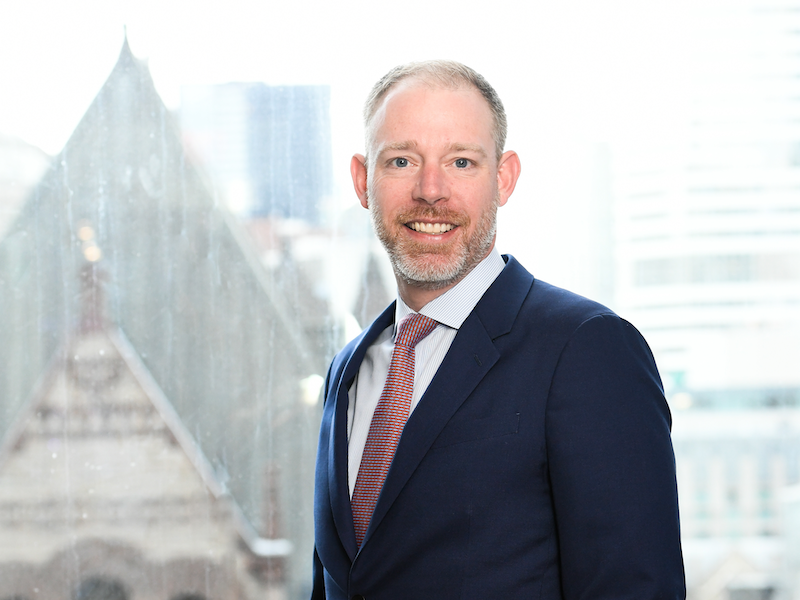

Consensus expectations for U.S. inflation and interest rates in 2023 are overly optimistic, said Robert Forsyth, head of SPDR exchange-traded funds strategy and research at State Street Global Advisors SPDR, during a session at the Canadian Investment Review‘s 2022 Defined Benefit Investment Forum.
“Our view is that the futures market is still pricing in an eventual [Federal Reserve Bank] pivot too early,” he said, referring to the Fed’s policy of raising interest rates to reduce the speed of inflation. “We think we’ve experienced peak inflation and that we’ll reach peak hawkishness in December. But we don’t think we’ll see a reduction in rates as quickly as it’s being priced in.”
December’s futures markets indicate the consensus view is for inflation in the U.S. economy to reach 2.5 per cent in 2023, but Forsyth anticipates it will run much higher. “We think it’s more likely to run between 3.5 and four per cent.”
Read: BoC efforts to cool inflation attracting long-term institutional investors: expert
Despite this, he accepts the broadly held view that North American economies will see a short, shallow recession by the middle of next year. He noted the leading economic index, which tracks variables that have historically trended downward in the run-up to recessions, has contracted throughout the year. “As we enter this high-inflationary, hawkish monetary policy environment, we’ve seen all the inputs coming off where they were a year ago. A lot of this is driven by the inverted yield curve, the higher inflationary pressures, manufacturing and the [purchasing managers’ index].”
Indeed, he said he suspects the leading economic index is painting an overly favourable view of North American equities. “It’s been maintained on the back of a really tight labour market and the really good performance of risk assets. October and November have been good months for U.S. equity markets — that’s propped up the LEI and probably more than it should be, all else considered.”
According to Forsyth’s interpretation of the tea leaves, U.S. equities were bolstered by the defensive postures taken by investors throughout 2022. When cornered by ill economic omens, investors around the globe tend to head for the perceived safe harbour of North American equities. “The story here is that we’ve been in a crisis for high-risk regimes that have pushed managers into very defensive positions. This high-risk aversion and defensive posturing has been felt across all investor types that we monitor.”
Read: Pension plan sponsors push on with real estate investments despite Omicron setback
This flooding of capital into the U.S. has driven up its equity prices — and even pushed the greenback to new highs against the euro, pound and yen. In turn, the strength of the U.S. dollar has helped mask the fundamental volatility of the equities denominated by it. “When you look at forex volatility in particular, a lot of the uncertainty has been diffused within the last 12 months or so. . . . This is allowing equity volatility to remain relatively subdued. For the type of risk market we’ve found ourselves in for the last 12 months, we’ve been maintaining [CBOE volatility index] levels that are relatively orderly, considering how painful equity markets have been.”
While Forsyth credits some of the relative stability to hedging within the equity and futures markets, he believes a large portion is due to the limited trading that’s occurred throughout the year. “Some of it’s a lack of portfolio positioning changes. . . . As a result of the role of monetary policy, a lot of the inflationary pressures [felt in 2022] had been very well forecast. Investors have been able to position themselves ahead of these macro variables during a time when maintaining positions has been very important.”
He also noted that, while downside volatility has been muted, upside volatility has been more pronounced. During November, the S&P 500 index rose by about 5.5 per cent. However, if one ignored its two strongest days, it would have finished the month down 3.5 per cent. The fact that both of those top-performing days occurred after better than expected news from the Fed demonstrates that investors aren’t paying attention to the market’s fundamental characteristics, he said. “Markets have been moving around based on macro data. It’s not been a fundamental-driven environment for most of the past year.”
Read: Inflation causing ‘great distortions’ in popular carbon footprint measurement, warns expert
While Forsyth doesn’t believe current futures market prices can be justified, he does expect them to begin their recovery relatively quickly after the next recession begins. “It’s important to remember that equity markets are forward-looking. . . . They will price in the bottom well before economic activity, bottoming in a likely recession in the first half of 2023.
“A new goal market is likely to occur three to six months before there’s a meaningful earning trough and, maybe, six to nine months before [the purchasing manager’s index] has completely bought them out.”
